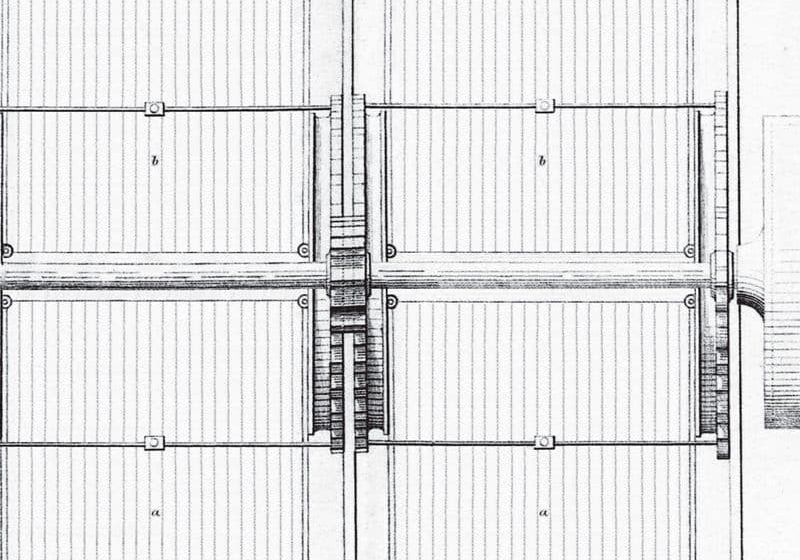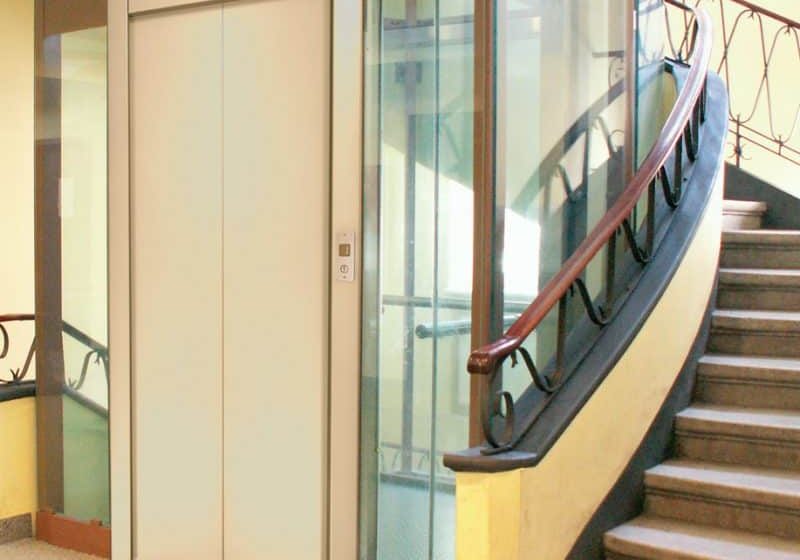Year in Review: Tall Trends of 2013
Apr 1, 2014

A small increase in 200-m-plus-tall building completions marks a return to upward trends.
by Daniel Safarik and Antony Wood
By all appearances, the small increase in the total number of tall-building completions from 2012 to 2013 is indicative of a return to the prevalent trend of increasing completions each year over the past decade. Perhaps 2012, with its small year-on-year drop in completions, was the last year to register the full effect of the 2008/2009 global financial crisis (ELEVATOR WORLD, April 2013), and a small sigh of relief can be let out in the tall-building industry as we begin 2014.
At the same time, it is important to note that 2013 was the second-most-successful year ever, in terms of 200-m-plus-tall building completion, with 73 buildings of 200 m or greater height completed. Only the 81 completions of 2011 surpassed this figure. When examined in the broad course of skyscraper completions since 2000, the rate is still increasing. From 2000 to 2013, the total number of 200-m-plus-tall buildings in existence increased from 261 to 830 — an astounding 318%. From this point of view, we can more confidently estimate that the slight slowdown of 2012, which recorded 69 completions after 2011’s record 81, was a “blip,” and that 2013 was more representative of the general upward trend.
For the fourth year running, nine supertalls (at 300-m-plus heights) were again completed in 2013. The 36 supertalls built over the last four years comprise nearly half of all supertalls (77). Across the globe, the sum of heights of all 200-m-plus-tall buildings completed globally in 2013 was 17,662 m. This is also ranked second in history, behind the 2011 record of 21,642 m. Of the 73 buildings completed in 2013, 12 (16%) entered the list of 100 tallest buildings in the world.
For the sixth year running, China had the most 200-m-plus-tall completions of any nation, at 37, located across 22 cities. The tallest building to be completed in 2013 was the 355-m-tall JW Marriott Marquis Hotel Dubai Tower 2 in Dubai. Three of the five tallest buildings completed are in the U.A.E. for the second year in a row. Europe has two of the 10 tallest buildings completed in a given year for the first time since 1953. Panama added two buildings of such a height, and the U.S. contributed 1717 Broadway in New York City (NYC) to the list.
Key Snapshots of 2013
Asia
Asia completely dominated the world tall-building industry, at 74% of worldwide completions with 53 buildings in 2013, against 53% with 35 buildings in 2012. Asia now contains 45% of the 100 tallest buildings in the world. China remained the continent’s heavyweight and overall undisputed champion of tall-building construction. A total of 37 200-m-plus-tall buildings were completed – 50% of the global total and up from 24 in 2012.
The sum of heights of all 200-m-plus-tall buildings in China in 2013 was 8,876 m, compared to 5,823 m in 2012, an increase of 52.4%. These buildings were spread across 22 cities. Shenzhen proved to be the most active skyscraper city, doubling its number of completions from the previous year, from two to four. It was closely tailed by Chongqing and Shanghai, which tied at three. Nanjing, Shenyang, Suzhou, Hefei, Tianjin, Nanning, Xiamen and Guangzhou each claimed two completions. Of these, Hefei and Xiamen are first-time entries to this list. The tallest building to be completed in China in 2013 was the 332-m-tall Modern Media Center in Changzhou.
South Korea had the next-largest number of tall completions in the Asian region, though its figure of nine buildings was almost entirely due to the opening of an eight-building complex, the Tanhyun Doosan project. Goyang, a city of 1.5 million near Seoul, is now on the world skyscraper map, in the same way that so many Chinese cities have entered the world’s consciousness over the past dozen years. Its achievement is in having eight 200-m-plus-tall buildings complete in 2013.
Middle East
The Middle East recorded completion of 12 buildings of at least 200 m in height, forming 16% of the world total in 2013. This is a decrease from 16 buildings for 24% of last year’s total. While last year’s score was boosted by the completion of the Abraj-al-Bait Endowment, a single seven-building complex in Saudi Arabia, the U.A.E. remained a dominant player in 2013, increasing from five to 10 completions, a national total second only to China’s. The U.A.E. has been in the top four nations of this category since 2008 and in the top three since 2010. For the second year in a row, three of the five tallest buildings completed globally this year are in the U.A.E.
Dubai and Abu Dhabi continued apace in 2013, each completing five 200-m-plus-tall buildings. Dubai laid claim to the title of both the world’s tallest building completion of 2013, the 355-m-tall JW Marriott Marquis Hotel Dubai Tower 2, as well as the world’s tallest twisting tower with the 307-m-tall Cayan Tower. Abu Dhabi completed The Gate Towers, which was also a finalist in the Middle East category of the Council on Tall Buildings and Urban Habitat’s (CTBUH) Best Tall Buildings awards.
Europe
Europe completed four tall buildings in excess of 200 m tall in 2013 and increased its total number of supertalls from one to three. In 2013, Europe also had two buildings (The Shard in London and Mercury City Tower in Moscow) in the world’s 10 tallest completions for the first time since 1953, when two of the seven Moscow “sisters” (MV Lomonosov State University and The Ministry of Foreign Affairs) were completed.
Among the two supertalls to be completed in Europe last year was The Shard, which is not only the U.K.’s tallest at 306 m, but a world-class victory for developer persistence amidst financial crisis, regulatory scrutiny, and historic-preservation and traffic-flow constraints. These plaudits and its aesthetic merits won the building CTBUH’s 2013 Best Tall Building Europe award. The 339-m-tall Mercury City tower put Russia on top of the continent, while the 220-m-tall DC Tower I brought Austria further into the fold of “European Tall.”
The Americas
North America’s share of total 200-m-plus-tall completions during 2013 dropped from 6% to 1% of worldwide figures. Panama comprised the totality of tall buildings completed in Central America in 2013, with none completed in South America. Panama’s 267-m-tall Bicsa Financial Tower and 246-m-tall “yoopanama inspired by Starck” were built in Panama City. The expansion of the Panama Canal and the appeal of buying real estate on an urban, tropical seashore continued to attract commercial and residential interest to a country that now has 19 tall buildings taller than 200 m but had none as recently as 2008.
In the U.S., heavy construction and a slew of new proposals made 2013 an exciting year in NYC, though only one 200-m-plus-tall building, the 230-m Marriott Courtyard and Residence Inn Central Park Hotel at 1717 Broadway, was actually completed. The skyscraper world stage briefly returned to the U.S.’ decades-long spat between Chicago and NYC in 2013, as the Council’s Height Committee ruled that the spire of One World Trade Center would count toward its official height (EW, January 2014). However, the
541-m-tall building will have to wait until 2014 to officially enter the ranks of the world’s tallest 10 (likely briefly holding position number three) when completed. The balance of U.S. interest is in the series of super-slim luxury residential towers now cropping up along 57th Street and in Lower Manhattan, New York: here, slenderness ratios, not pure height, are the object of much discussion. Still, it will be several years before many of these “billionaire needles” are completed.
Noted Absences
After a burgeoning 2012, Canada seemed to be catching its breath in 2013, registering no completions taller than 200 m in 2013, while having finished four in 2012. A busy but sporadic tall-building market, Australia also failed to complete such buildings in 2013, after churning out three in 2012. Most of Australia’s activity in 2013 was restricted to design proposals and heated discussions about where it is appropriate to build tall, particularly in Melbourne. After completing the world’s second-tallest building in 2012, Saudi Arabia dropped out of completions in 2013 but saw the important milestone of breaking ground on Kingdom Tower, the 1-m-tall plan set to be the world’s tallest building when completed in 2019.
Tall Buildings in 2013: Analysis
Of the 73 200-m-plus buildings completed in 2013, the share of pure office buildings continued to decline, from 39% to 34%. Purely residential functions comprised 30% of 2013 completions. Mixed-use buildings ticked up slightly, to 30%, up from 29% in 2012. Four of the completions were hotels, comprising 5% of the total (against 1% in 2012). Concrete remains the building material of choice for tall buildings globally, holding steady at 63% of completions.
A Look to 2014
It’s fair to say that 2013 was a year of recovery and a return to the still relatively “new normal” of year-on-year growth in skyscraper completions. While zero megatall (600-m-plus) and nine supertall buildings were completed in 2013 (against one megatall and nine supertalls in 2012), there was no shortage of activity in planning phases, suggesting that the malaise of the global recession may finally have been shaken off in many regions.
In 2014, CTBUH predicts that 65-90 buildings at least 200 m tall or more will be completed. This year will no doubt be an exciting one and a year of continued growth. Up to 13 of scheduled completions in 2014 will be supertalls, The Gran Torre Santiago (at 300 m) will be South America’s tallest building and first supertall, and twisting towers will continue to enter the vanguard of tall in 2014 (for example, the KKR2 Tower in Kuala Lumpur and the Spine Tower in Istanbul). One World Trade Center in NYC is to stand at its intended symbolic 1,776 feet (541 m), gaining status as North America’s tallest building.
A typically curvaceous Zaha Hadid-designed tower, the Wangjing SOHO T1, will be completed in Beijing this year. This building was the subject of piracy rumors early last year when a highly similar tower group, the Meiquan 22nd Century in Chongqing, was revealed. The race is on in earnest to see if the “original” finishes before the “copy.”
The Shanghai Tower finished its concrete core in 2013. The 632-m tower, originally set to be completed in 2014, will boast the world’s fastest elevators (EW, July 2013), as well as innovative use of double skins and sky lobbies. Its construction has been and will continue to be one of the most closely watched tall-building spectacles. Even if its completion date slips into 2015, as now seems likely, Shanghai Tower will likely be China’s tallest building for at least a while, depending on the progress of rivals Ping An Finance Center (planned for 660 m in height), Wuhan Greenland Center (to be 636 m tall) and, possibly, the 220-story, under-construction Sky City in Changsha, planned to reach 828 m in height upon its 2014 completion (EW, October 2013).
Get more of Elevator World. Sign up for our free e-newsletter.







